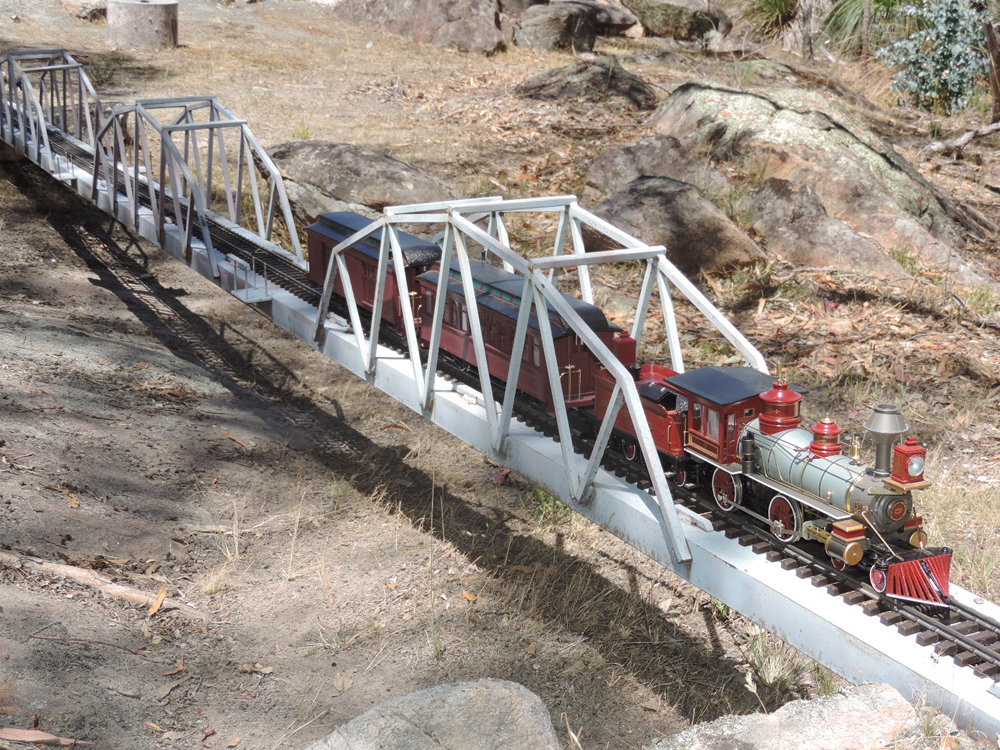
Garden railroad in Australia: I have been a model railroader in both N and HO scale, and then I discovered large scale. My other pastime is the sport of Cowboy Action Shooting, so I knew my theme would be the Wild West. Space was limited on my inner-city block, so I set up a basic […]
Read More…
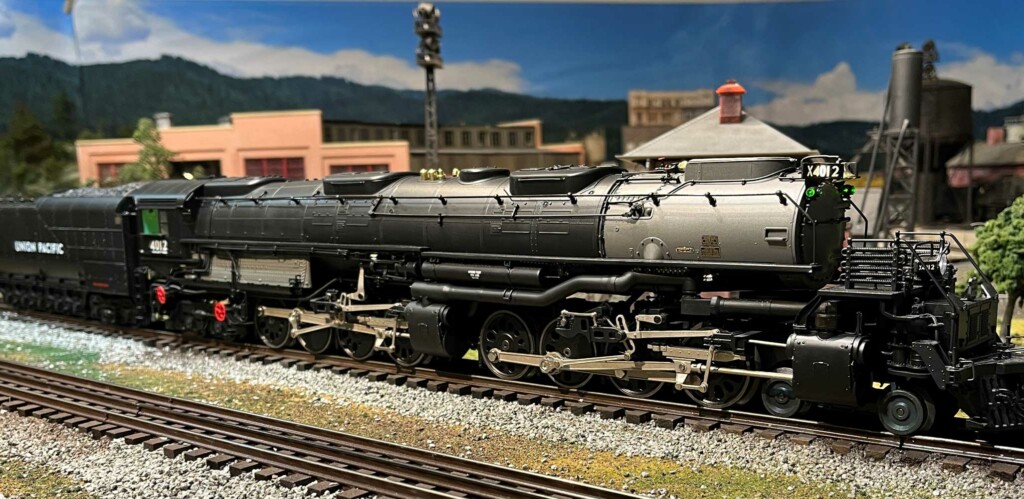
Chris Montagna is a Contributing Editor of Classic Toy Trains and operates the Chris’s Trains and Things channel on YouTube. What Toy Train Locomotive Means the Most to You? When I reflect on the locomotives in my collection it’s difficult to pinpoint just one that I love above the rest. I was recently asked this […]
Read More…

The best N scale tools: I’m going to write about what might be called “second-echelon” tools, that’s to say the tools you begin accumulating after you’ve been in the hobby awhile and have the basic tools you really can’t do without. The following is a short list of the some of the best N scale […]
Read More…
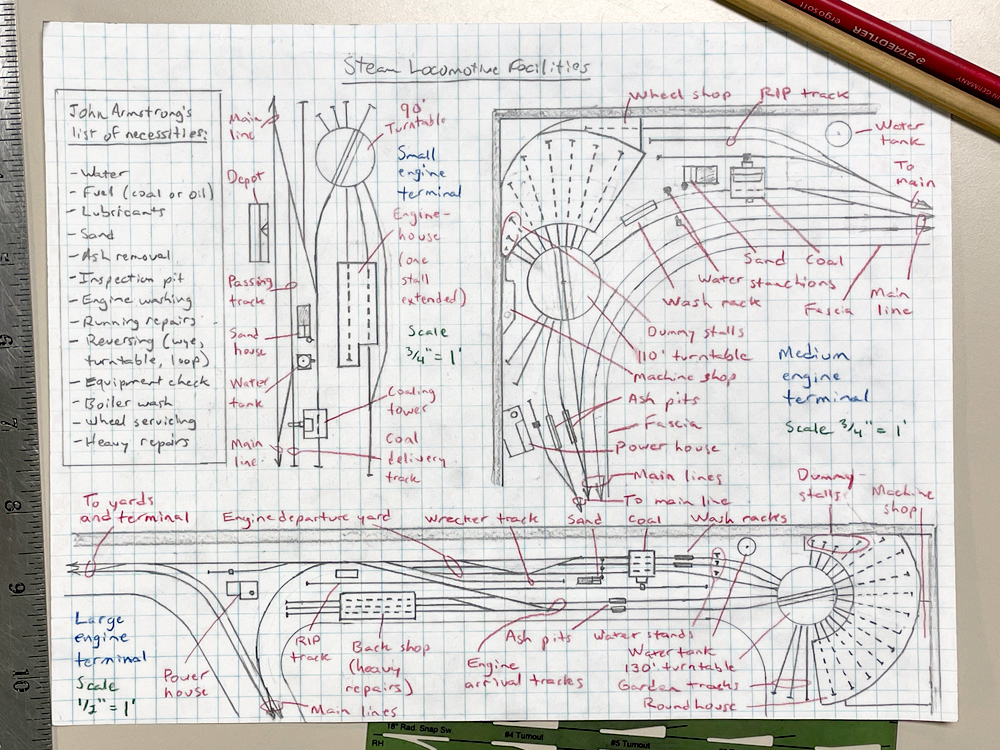
If you run steam locomotives on your model railroad, you need a steam engine terminal. Even if you don’t have room to model one, your model locomotives must get serviced somewhere off layout. But there are a lot of good reasons to model a steam engine terminal. First of all, and most important to some, […]
Read More…
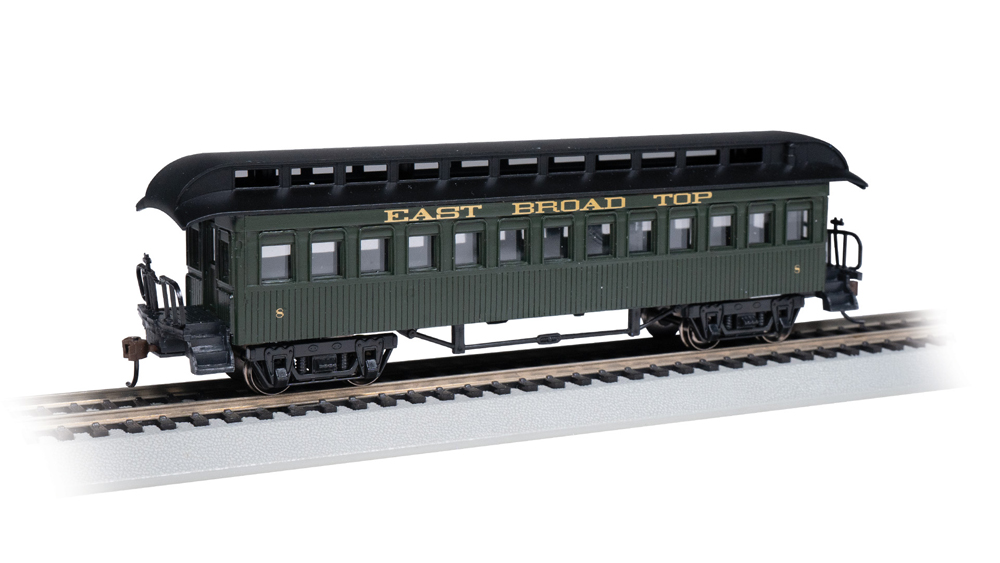
What is the largest radius curve on your layout? If you said anything less than 24”, you won’t be running 85-foot passenger cars any time soon. Even then, a 24” curve is extremely tight for those cars to navigate. Fear not, I have the solution for your long passenger car dilemma: short steam era passenger […]
Read More…
Signaling has entered a golden age in the hobby. More options exist now than have ever existed before for modelers to add signals to their railroads. Resources and online groups allow access to information and photographs at an unprecedented level. Possibilities cover the full range of options from a single stand-alone manual signal to a […]
Read More…
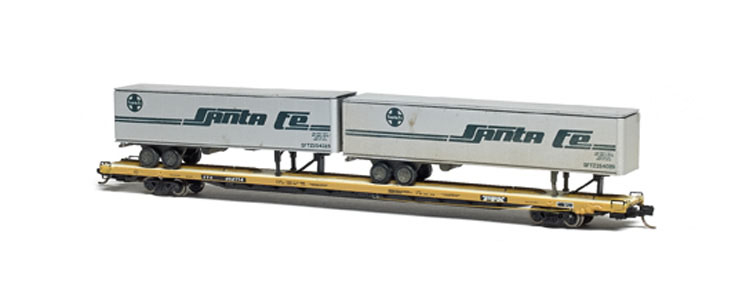
How to keep N scale piggybacks on track: My N scale Tehachapi Pass layout is set in 1985. Intermodal railroading was well established, but on nothing like the scale we see today. Most intermodal traffic in the pass was TOFC (trailer-on-flatcar), more commonly called “pigs,” short for piggybacks. For my money there’s nothing much less […]
Read More…
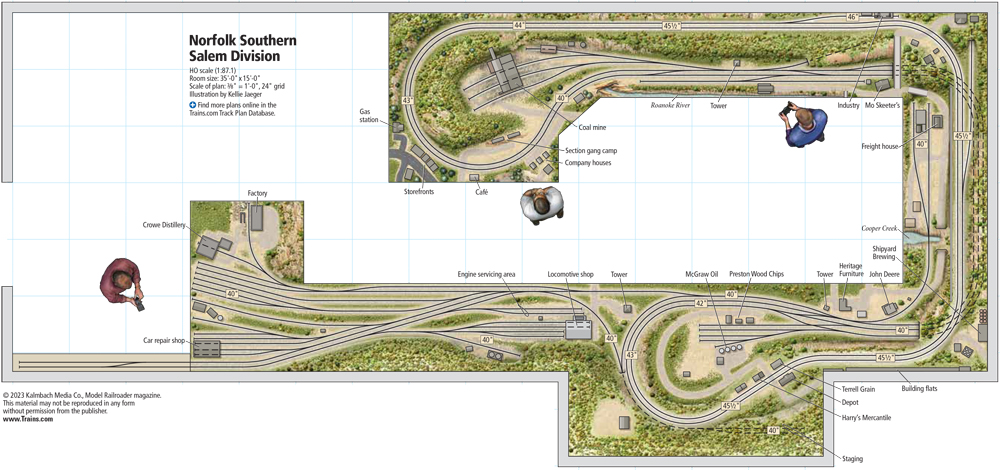
Facts & features Name: Norfolk Southern Salem DivisionScale: HO (1:87.1)Size: 15 x 34 feetPrototype: Norfolk Southern Locale: Salem, Va.Era: summer 1991Style: walkaroundMainline run: 80 feetMinimum radius: 22″ (branch), 25″ (main)Minimum turnout: No. 6Maximum grade: 1.5%Benchwork: open gridHeight: 40″ to 46″Roadbed: corkTrack: Atlas code 83 flextrack with Peco and Shinohara turnoutsScenery: extruded-foam insulation board and Woodland […]
Read More…

Facts & features Name: Narragansett RailroadScale: On30 (1:48)Size: 24 x 22 feet Prototype: freelancedLocale: Rhode IslandEra: 1929 to 1935Style: walk-inMainline run: 150 feetMinimum radius: 18″Minimum turnout: No. 4Maximum grade: noneBenchwork: open gridHeight: 57″Roadbed: noneTrack: flextrackBackdrop: hand-painted tempered hardboardControl: direct current Download a PDF of this trackplan! Buy the August 2023 issue of Model Railroader! […]
Read More…

Q: I am researching transition era railcar brakes. Were there books written on the subject, and are they still available for purchase? – Ron Buddemeier A: The most complete and detailed reference for transition era railcar brakes is the one used by the railroads themselves – the Car Builder’s Cyclopedia of American Practice. This weighty […]
Read More…

A handy N scale uncoupler: If you’re a model railroader, everywhere you go your antennae are out, scanning your environs for anything that might be useful to build with. And that leads me to swizzle sticks. I was having lunch with a tableful of in-laws at Maggiano’s Little Italy, a popular chain with a restaurant […]
Read More…
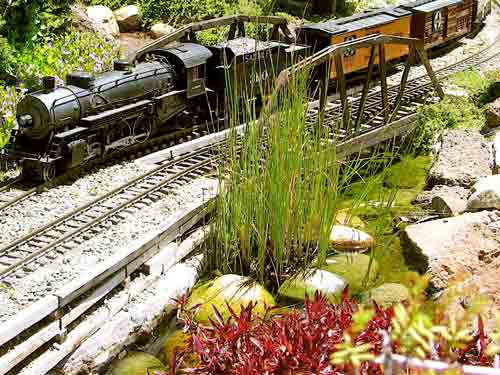
Water plants for the garden railway Ah, summer! It’s hot enough for iced tea and watermelon. You’re sitting by your little pond, enjoying the rhythmic chimes of rushing water from your railway’s beautiful falls. Through the haze your eyes rest on a serene lake; you’re imagining that anticipated fishing trip. Mountains reflected in cool, clear […]
Read More…











